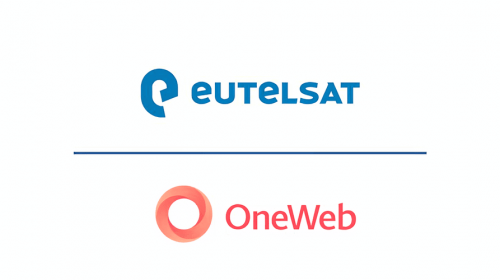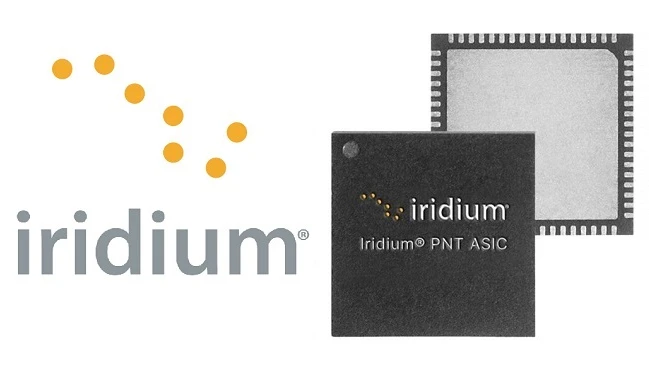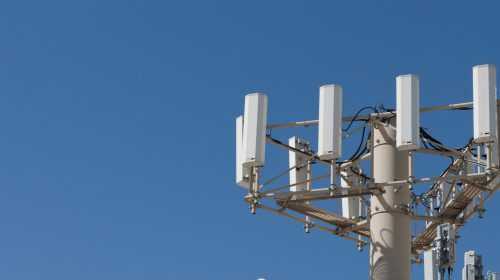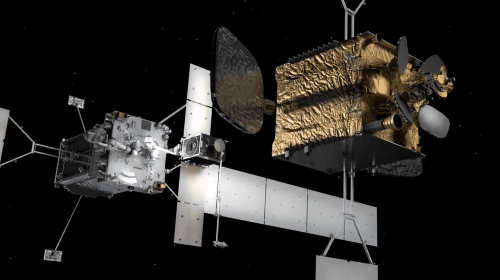Design Considerations for Satellite Broadband Service for Trains
Sep 21, 2019
There is a growing demand to stay connected from users around the world, even when traveling. Salesmen need to stay in touch with the office, business workers like to remain productive, even when trapped on long trips between cities or countries, families want to pass the time with loved ones, sharing the experiences of their journey. The transportation providers want to improve efficiency by automating ticketing, communicating maintenance and scheduling issues with the home office and upcoming destinations. In some areas of dense population, users may have access to 3G or 4G wireless services, but this connectivity can be intermittent and spotty, and may disappear altogether as the transportation vehicle passes through rural locations.
The acronym used to refer to broadband communications while the vehicle, which might be an airplane, train, or bus, is moving is called COTM or Communications on the Move. This is contrasted with COTP or Communications on the Pause, which is what we typically find on Recreational Vehicles or News Gathering Services that drive to a location, park and then deploy an antenna which then operates much like any other fixed VSAT antenna. COTM has more challenges. In this article, we’ll look at some of the challenges, and in particular, solutions for trains.

Internet services for trains generally provide for two classes of service – railway operations and passenger services. Critical data for railway operations may include operational safety data, including maintenance systems status, emergency information, video monitoring via IP-based closed-circuit video, telemetry, and even control systems known as PTC or Positive Train Control. If there is a single VSAT system, railway operations traffic may be prioritized over passenger services such as the data and voice connectivity users have come to expect everywhere. This traffic is typical web browsing, downloading files and video, gaming and even VoIP (Voice over IP). It is even possible to install micro or “pico-cells” to allow customer’s cellular phones to communicate even when there are no cell towers nearby. Just as there is a surge of growth for airborne broadband service, the same is expected for rail transport – particularly passenger rail transport.
Challenges
While cellular 3G/4G services are sometimes available to rail passengers and crew, these services tend to be intermittent and spotty, particularly in rural regions. Only satellite-based solutions can provide consistent, reliable connectivity. Costs are coming down with the growing availability of HTS (High Throughput Satellite) services.
The greatest challenge for any mobility application is the signal interference caused by obstructions to the physical line-of-sight (LoS) to the satellite. LoS can be affected by buildings, trees, tunnels and other structures. For long range travel, sometimes there are challenges when crossing national boundaries or a need to transfer to a different service provider. There are also issues not faced by fixed VSAT installations including heat, vibration and EMI (electromagnetic interference). The antennas must deal with issues such as Doppler shift, which compresses or stretches out a signal depending on whether the train is headed to or away from the satellite. Sometimes there are issues crossing from one satellite beam to another, or to an entirely different satellite. This requires “beam-switching” technology from the solution provider. Of course, there is the limiting factor of antenna size. You can’t put a 2.4-meter C band antenna on a train!
 Orbit Mobil SatCom RailTRx
Orbit Mobil SatCom RailTRx
Clearance
Many, if not most train journeys involve at least some time going through an underpass or a tunnel. The train antenna must not extend more than a small distance above the top of the train or it may be damaged or destroyed. The selection of a classical mechanized gimbal antenna vs a phased array FPA (Flat Panel Antenna) may depend in part of how much clearance is available. Parabolic antennas have issues seeing the satellite in equatorial regions.

Line of Sight Considerations
As discussed, line-of-sight reception is generally not guaranteed due to the obstructions mentioned above. When there is a break in the LoS connectivity, the “clock” that times signal transmissions must be regenerated, particularly if the interruption is for more than a few seconds. When interruptions last longer than about 30 seconds, as may be the case going through a tunnel, the modem must turn off the transmitter to ensure that it is not creating problems by interfering with transmission of other terminals sharing the same carrier.
Atmospheric Issues
Atmospheric conditions can also play a role. As the train moves across the satellite footprint the satellite signal strength may vary, particularly as the train approaches the edge of the satellite beam. Atmospheric conditions such as heavy rain can degrade transmit and receive signals. The service should provide features to adjust power and/or modulation and coding to overcome signal degradation.
Train Speed
As mentioned above the speed of the train can be a factor. The modem must make adjustments accounting for Doppler shift, which causes changes in symbol timing. This affect worsens as modulation complexity increases, so the system must account for the speed and direction of the train, allowing algorithms to be applied that correct for the frequency shift.
Beam Switching
Sometimes trains covering large distances will need to switch from one satellite coverage to another. New HTS satellites have smaller “hot spot” beams, unlike the larger regional beams of conventional satellites, so a train is more likely to cross from one spot beam to another. The system must be designed to seamlessly transfer the connection from one beam or satellite to another.
Summary of System Requirements for a Successful Train Service
A successful train solution will require IPv6 support which future proofs the network to accommodate an unlimited number of devices on the train. ACM or Adaptive Coding and Modulation will be required to allow the satellite link to continually optimize the signal as the train travels through a range of conditions within the contour of the satellite footprint. A concept called TDMA Channel Spreading will be required to overcome issues of off-target signals from very small antennas, to mitigate ASI or Adjacent Satellite Interference. In other words, it must be assured that the signal sent by the antenna is directed at the correct satellite and does not interfere with others nearby. As mentioned above, doppler compensation must account for frequency shifts. On the networking side, IP Steady State will be needed to maintain IP sessions as they are occasionally blocked by obstacles such as going through a tunnel. The platform must be designed for a harsh environment and be ruggedized to handle high heat, humidity, dust and vibration. Finally, for long range trains, the system must support Automatic Beam Switching that determines location and timing and commands the antenna to switch to a new satellite as needed.
Components

The hardware components consist of a stabilized VSAT (Very Small Aperture Terminal) antenna, a GPS receiver and a gateway/router system. The VSAT antenna may be a mechanized gimbal antenna that sits within a protective radome and is constantly moving to align with the satellite. It might also be an FPA or Flat Panel Antenna that uses a phased array technology to connect to the satellite. See: State of the Art – Flat Panel Antennas Typically the antenna is mounted on the roof of the train, and cabling carries the signal to transmission and distribution equipment located underneath.
Assuming the train has only one system installed, the service should offer traffic differentiation, that is the critical administrative traffic may need to be prioritized over commuter browsing traffic. Voice traffic used by the train operator may need to be prioritized to deliver consistent, business quality.
Distribution of the service is generally simplified by using WiFi connectivity, particularly if train cars are frequently being added or removed, which complicates physical wiring. However, for very long trains, wiring may be needed to extend the service from a WiFi service at one end of the train, to another at the other end of the train.
In an ideal scenario, the commuter will have internet access while waiting for a train in the station, and seamlessly pick it up as he or she moves on to the train. Since many rail stations are often in areas in which satellite would be blocked by buildings, having terrestrial services available to offer will be a plus. The seamless handover part may present challenges depending on how the local terrestrial service is provided, and the commuter may be required to connect to a different service when they board or exit the train.
BusinessCom is currently offering a train solution designed with the above recommendations in mind. We currently provide broadband throughput with enough capacity for use on trains, leveraging dedicated bandwidth and supported by a Service Level Agreement (SLA). We propose a Kymeta FPA with no moving parts, providing a reliable, long term solution. The antenna is slim, with no loading gauge issues, as compared with mechanized parabolic reflector solutions such as gimbal antennas. The telco-grade solution is extremely robust in harsh conditions.
The service leverages DVB-S2/SCPC and ACM technologies to provide maximum link efficiency and comes with network monitoring and troubleshooting software tools. It provides bandwidth management and optimization to ensure prioritization of critical traffic.
The Kymeta KyWay U7 phased array antenna is a lightweight, slim, high-throughput system. The 70 cm flat panel satcom on the move (SOTM) system is ideal for connecting nearly any vehicle, vessel, or fixed platform, and provides reliable communication even at high train speeds.

The BusinessCom solution incorporates innovative algorithms for network access, resource allocation and data encapsulation, as well as advanced modulation and coding, implemented in the satellite routers, to ensure the efficient utilization of satellite resource.
The satellite link will be engineered using ITU rain fade models to provide calculated annual two-way availability as specified in the SLA. Systems are engineered so all the paths achieve above 1 dB of effective fade margin. The preliminary calculations for path performance are based on published receiver threshold levels as registered with the FCC. Standard transmission engineering practices, formulas and topographic data are the foundation of these calculations.
Dedicated bandwidth will be delivered using the UHP Networks UHP 230SA router, a compact and reliable device that can be installed on a work desk, in an equipment rack or a customized enclosure. The low-power consumption and a unique fast start on power-up, facilitates use of alternative power sources such as solar batteries.
The integrated high-performance IP router supports different protocols and has expanded means for provision of Quality of Service (QoS). UHP is a high-performance satellite router for a wide range of applications, such as enterprise networking, videoconferencing, distribution and contribution of video, voice and data trunking, cellular backhaul, and broadband Internet access.
BusinessCom will provide full installation and implementation of the terminal on the customer’s train.
 UHP 230 SA modem front and back
UHP 230 SA modem front and back
The BusinessCom solution provides a very fast router with aggregate throughput up to 450 Mbps. It has two independent DVB demodulators with separate software switchable IF inputs. The router supports enhanced DVB-S2 QPSK, 8PSK, 16APSK and 32APSK modulations. The MF-TDMA demodulator with innovative protocol boasts proven efficiency of 96% vs. SCPC. Adaptive coding and modulation (ACM) is supported in forward and return channels. The router supports a variety of different modes of operation and technologies including SCPC, TDM/ TDMA, TDM/TDMA Mesh, and Hubless TDMA.
The solution is HTS-ready with support for multiple beams, bands, and satellite reception with traffic balancing. The router produces up to 226,000 pps and supports a rich set of protocols along with multi-level QoS. Standard Layer 3 routing architecture is supported, along with Layer 2 bridging mode, and IPv6 transport. A built-in switch for the two Ethernet ports provides scalability and supports connection of customer premise equipment, such as WiFi. There is optional support for 1:1 or 1:N automated redundancy schemes without the use of external controllers.
Connectivity is back to BusinessCom teleport facilities that provide redundant backbone access via a redundant network architecture.
 BusinessCom DE1 teleport network connectivity
BusinessCom DE1 teleport network connectivity
Connectivity is expected everywhere, and today that includes while traveling. Time is an expensive commodity and getting the most out of it while on a train journey, whether to visit a client, or for personal leisure and recreation, is becoming a matter of rising demand from commuters. BusinessCom, leveraging experience and expertise, is proud to be expanding its mobility solutions for maritime applications to include train solutions. Please tell us about your train requirements.





